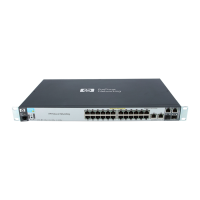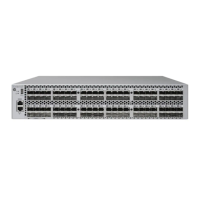SPI Programming Considerations for TMF
HP NonStop TMF Management Programming Manual—540140-008
3-9
Event-Management Considerations for TMF
mechanism appropriate to your programming language (for example, a
WRITEREAD call in TAL).
4. Read the response from the distributor using the mechanism appropriate to your
programming language (for example, a WRITEREAD call in TAL).
5. Repeat the following steps in a loop:
a. Format and send a GETEVENT command to the consumer distributor to get
the next event message, using the mechanism appropriate to your
programming language (for example, a WRITEREAD call in TAL).
b. Read the response from the distributor using the mechanism appropriate to
your programming language (for example, a WRITEREAD call in TAL).
c. Call SSMOVE or SSMOVETKN to move the context token from the response
buffer into the GETEVENT command buffer. The context token will be needed
when your application resends the command to get the next event.
d. Call SSGET or SSGETTKN to retrieve the token containing the event message
(ZEMS-TKN-EVENT) from the response buffer.
e. Call EMSGET or EMSGETTKN to retrieve the subsystem ID (ZSPI-TKN-SSID)
and the event number (ZEMS-TKN-EVENTNUMBER) from the event
message. Together, these two tokens identify the event message and
determine what information tokens it will contain.
f. Call EMSGET or EMSGETTKN twice to retrieve the subject of the event
message. In the first call, retrieve the subject-mark token (ZEMS-TKN-
SUBJECT-MARK) to get the token code and index of the token identifying the
subject. Then make another call to retrieve the subject token itself.
g. Call EMSGET or EMSGETTKN to retrieve the values of other tokens from the
event message.
h. If you encounter the error-list token (ZSPI-TKN-ERRLIST), make another call
to EMSGET or EMSGETTKN to retrieve the tokens inside the error list.
i. Take action appropriate to the information in the event message.
The EMS Manual provides information about how to retrieve tokens from an event
message.
Event-Management Considerations for TMF
The overall goal of event reporting by TMF is to allow the system operator or a
management program to monitor and control the operation of the subsystem. TMF
reports events to EMS but not to the Tandem Maintenance and Diagnostic Subsystem
(TMDS).
The maximum buffer size needed for any TMF event message is 4024 bytes.
